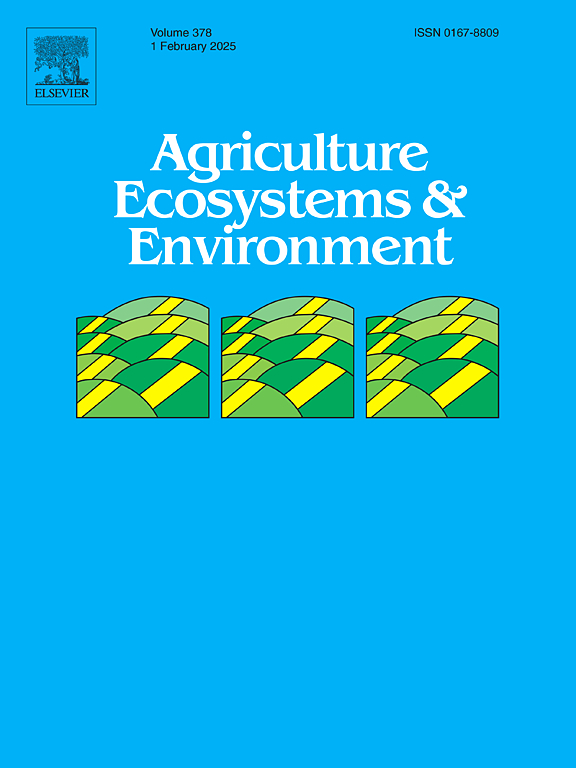Intensive agriculture influences functional diversity, redundancy and trait profile of bee community and interacting plant community in a tropical agricultural landscape
IF 6
1区 农林科学
Q1 AGRICULTURE, MULTIDISCIPLINARY
引用次数: 0
Abstract
The impact of agricultural intensification on bee community functional structure remains poorly understood. It may be assumed that agricultural intensification will influence trait diversity in the bee community through its effect on traits in the interacting plant community, as well as the modification of nesting habitats and insecticide exposure. Agricultural intensification may act as an environmental filter influencing species diversity, functional diversity and their inter-relationship, i.e., functional redundancy or complementarity in the bee and plant species assemblage. This may result in some specific traits in the bee and plant communities existing in a given landscape. From our study across 30 sites in 3 tropical agricultural landscapes we found that while functional diversity decreased along a gradient of increasing agricultural intensification, both plant and bee communities had higher functional redundancy. High agricultural intensity favoured a limited number of plant and bee species. While most of the species underwent reduced abundance, a handful of species with similar functional traits in the plant and bee communities survived. Plant communities shifted towards larger floral displays and less tubular flowers with reduced plant height in intensive agro-landscapes, where smaller body size and shorter tongue length were predominant in the bee community ‘traitscape’ with a higher abundance of soil-nesting bees. Our study pointed out the vulnerable functional areas regarding conservation of plant and bee communities in agricultural landscapes. A more targeted restoration strategy should be aided by this information for complimentary delivery of pollination service in the landscape.
求助全文
约1分钟内获得全文
求助全文
来源期刊

Agriculture, Ecosystems & Environment
环境科学-环境科学
CiteScore
11.70
自引率
9.10%
发文量
392
审稿时长
26 days
期刊介绍:
Agriculture, Ecosystems and Environment publishes scientific articles dealing with the interface between agroecosystems and the natural environment, specifically how agriculture influences the environment and how changes in that environment impact agroecosystems. Preference is given to papers from experimental and observational research at the field, system or landscape level, from studies that enhance our understanding of processes using data-based biophysical modelling, and papers that bridge scientific disciplines and integrate knowledge. All papers should be placed in an international or wide comparative context.
 求助内容:
求助内容: 应助结果提醒方式:
应助结果提醒方式:


